要使用java操作hbase进行大数据存储,需通过其api实现连接、读写及高级查询。1. 首先配置maven依赖,包括hbase-client和hbase-common,并确保版本与集群一致;2. 建立连接时可通过hbase-site.xml或代码手动设置zookeeper地址;3. 实现数据增删改查操作,如createtable创建表、putdata插入单条数据、putbatchdata批量插入、getdata获取单行数据、scandata扫描数据;4. 使用bufferedmutator提升批量写入性能,设置缓冲区大小及刷新时间;5. 利用scan结合过滤器(如rowfilter、columnprefixfilter)实现复杂查询逻辑;6. 通过get.setmaxversions控制获取多版本数据;7. 注意连接管理,复用connection对象并及时关闭资源以避免泄露。
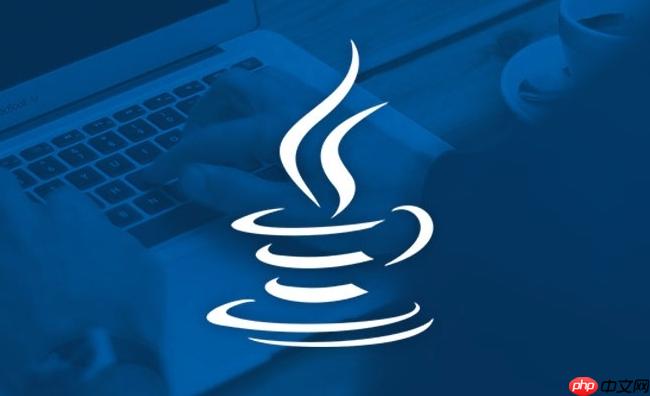
HBase大数据存储,用Java来操作它,说白了就是通过一套API,让你的应用能跟HBase集群对话,进行数据的增删改查。这套API设计得相当直观,但要用好它,尤其是在处理海量数据时,你需要理解其背后的机制,比如连接管理、批量操作和一些高级特性。核心在于建立稳定的连接,高效地读写数据,并能灵活应对各种查询需求。
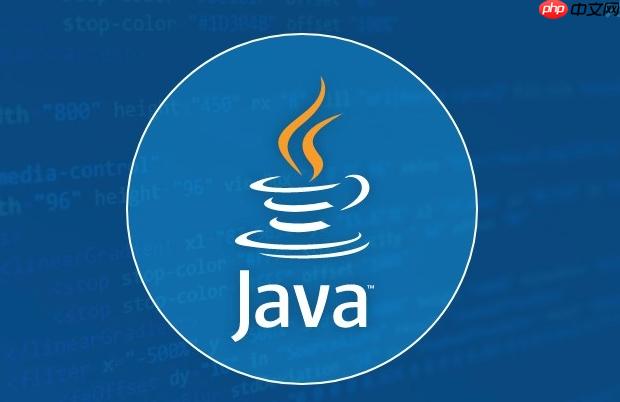
要用Java玩转HBase,首先得把环境搭好,Maven项目里加几个依赖是跑不掉的。主要是hbase-client和hbase-common,版本得跟你的HBase集群匹配,不然运行时可能会遇到一些奇怪的类加载问题。

<dependency>
<groupId>org.apache.hbase</groupId>
<artifactId>hbase-client</artifactId>
<version>2.4.11</version> <!-- 根据你的HBase版本调整 -->
</dependency>
<dependency>
<groupId>org.apache.hbase</groupId>
<artifactId>hbase-common</artifactId>
<version>2.4.11</version>
</dependency>接着就是连接HBase集群。这通常通过HBaseConfiguration和ConnectionFactory来完成。HBaseConfiguration会加载你classpath下的hbase-site.xml配置,或者你可以代码里手动设置ZooKeeper地址。
立即学习“Java免费学习笔记(深入)”;
import org.apache.hadoop.conf.Configuration;
import org.apache.hadoop.hbase.HBaseConfiguration;
import org.apache.hadoop.hbase.TableName;
import org.apache.hadoop.hbase.client.Admin;
import org.apache.hadoop.hbase.client.Connection;
import org.apache.hadoop.hbase.client.ConnectionFactory;
import org.apache.hadoop.hbase.client.ColumnFamilyDescriptorBuilder;
import org.apache.hadoop.hbase.client.TableDescriptorBuilder;
import org.apache.hadoop.hbase.client.Table;
import org.apache.hadoop.hbase.client.Put;
import org.apache.hadoop.hbase.client.Get;
import org.apache.hadoop.hbase.client.Result;
import org.apache.hadoop.hbase.client.Scan;
import org.apache.hadoop.hbase.client.ResultScanner;
import org.apache.hadoop.hbase.util.Bytes;
import java.io.IOException;
import java.util.ArrayList;
import java.util.List;
public class HBaseJavaOperations {
private static Connection connection = null;
private static Admin admin = null;
static {
Configuration config = HBaseConfiguration.create();
// 如果hbase-site.xml不在classpath,或者想覆盖配置,可以手动设置
// config.set("hbase.zookeeper.quorum", "your_zk_host1,your_zk_host2");
// config.set("hbase.zookeeper.property.clientPort", "2181");
// config.set("zookeeper.session.timeout", "180000"); // 增加ZooKeeper会话超时时间
try {
connection = ConnectionFactory.createConnection(config);
admin = connection.getAdmin();
} catch (IOException e) {
System.err.println("无法连接到HBase集群: " + e.getMessage());
e.printStackTrace();
}
}
// 创建表
public void createTable(String tableName, String[] columnFamilies) throws IOException {
TableName table = TableName.valueOf(tableName);
if (admin.tableExists(table)) {
System.out.println("表 " + tableName + " 已存在。");
return;
}
TableDescriptorBuilder tableDescriptorBuilder = TableDescriptorBuilder.newBuilder(table);
for (String cf : columnFamilies) {
tableDescriptorBuilder.setColumnFamily(ColumnFamilyDescriptorBuilder.newBuilder(Bytes.toBytes(cf)).build());
}
admin.createTable(tableDescriptorBuilder.build());
System.out.println("表 " + tableName + " 创建成功。");
}
// 插入数据 (单条)
public void putData(String tableName, String rowKey, String columnFamily, String column, String value) throws IOException {
Table table = connection.getTable(TableName.valueOf(tableName));
Put put = new Put(Bytes.toBytes(rowKey));
put.addColumn(Bytes.toBytes(columnFamily), Bytes.toBytes(column), Bytes.toBytes(value));
table.put(put);
table.close();
System.out.println("数据插入成功: rowKey=" + rowKey);
}
// 批量插入数据
public void putBatchData(String tableName, List<Put> puts) throws IOException {
Table table = connection.getTable(TableName.valueOf(tableName));
table.put(puts);
table.close();
System.out.println("批量数据插入成功,共 " + puts.size() + " 条。");
}
// 读取数据 (单条)
public Result getData(String tableName, String rowKey) throws IOException {
Table table = connection.getTable(TableName.valueOf(tableName));
Get get = new Get(Bytes.toBytes(rowKey));
Result result = table.get(get);
table.close();
if (result.isEmpty()) {
System.out.println("未找到数据: rowKey=" + rowKey);
}
return result;
}
// 扫描数据
public void scanData(String tableName, String startRow, String stopRow) throws IOException {
Table table = connection.getTable(TableName.valueOf(tableName));
Scan scan = new Scan();
if (startRow != null && !startRow.isEmpty()) {
scan.withStartRow(Bytes.toBytes(startRow));
}
if (stopRow != null && !stopRow.isEmpty()) {
scan.withStopRow(Bytes.toBytes(stopRow));
}
ResultScanner scanner = table.getScanner(scan);
try {
for (Result result : scanner) {
System.out.println("Scan Result: " + result);
}
} finally {
scanner.close();
table.close();
}
}
// 删除表
public void deleteTable(String tableName) throws IOException {
TableName table = TableName.valueOf(tableName);
if (!admin.tableExists(table)) {
System.out.println("表 " + tableName + " 不存在。");
return;
}
admin.disableTable(table);
admin.deleteTable(table);
System.out.println("表 " + tableName + " 删除成功。");
}
// 关闭连接
public void close() {
if (admin != null) {
try {
admin.close();
} catch (IOException e) {
e.printStackTrace();
}
}
if (connection != null) {
try {
connection.close();
} catch (IOException e) {
e.printStackTrace();
}
}
System.out.println("HBase连接已关闭。");
}
public static void main(String[] args) throws IOException {
HBaseJavaOperations hbaseOps = new HBaseJavaOperations();
String myTableName = "my_test_table";
String[] myColumnFamilies = {"cf1", "cf2"};
// 1. 创建表
hbaseOps.createTable(myTableName, myColumnFamilies);
// 2. 插入单条数据
hbaseOps.putData(myTableName, "row1", "cf1", "name", "Alice");
hbaseOps.putData(myTableName, "row2", "cf1", "age", "30");
hbaseOps.putData(myTableName, "row1", "cf2", "city", "New York");
// 3. 批量插入数据
List<Put> puts = new ArrayList<>();
puts.add(new Put(Bytes.toBytes("row3")).addColumn(Bytes.toBytes("cf1"), Bytes.toBytes("name"), Bytes.toBytes("Bob")));
puts.add(new Put(Bytes.toBytes("row4")).addColumn(Bytes.toBytes("cf1"), Bytes.toBytes("name"), Bytes.toBytes("Charlie")));
hbaseOps.putBatchData(myTableName, puts);
// 4. 读取单条数据
Result result1 = hbaseOps.getData(myTableName, "row1");
if (!result1.isEmpty()) {
System.out.println("读取 row1: " + Bytes.toString(result1.getValue(Bytes.toBytes("cf1"), Bytes.toBytes("name"))));
System.out.println("读取 row1: " + Bytes.toString(result1.getValue(Bytes.toBytes("cf2"), Bytes.toBytes("city"))));
}
// 5. 扫描数据
System.out.println("\n扫描所有数据:");
hbaseOps.scanData(myTableName, null, null);
System.out.println("\n扫描从 row2 到 row4 的数据:");
hbaseOps.scanData(myTableName, "row2", "row4"); // 注意HBase扫描是左闭右开区间
// 6. 删除表 (谨慎操作,测试完成后再执行)
// hbaseOps.deleteTable(myTableName);
hbaseOps.close();
}
}说实话,刚开始用Java连接HBase,最让人头疼的往往不是代码逻辑,而是环境配置。你可能会遇到各种连接超时、ZooKeeper找不到、或者权限不足的问题。我那会儿就经常被NoQuorumServersAvailableException或者RetriesExceededException搞得焦头烂额。
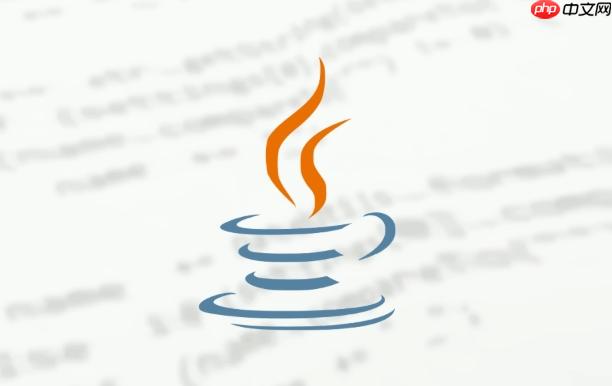
首先,hbase-site.xml这个文件至关重要。它应该放在你的classpath下,比如src/main/resources。HBase客户端会默认去加载它,里面包含了HBase集群的ZooKeeper地址、端口等关键信息。如果你的HBase集群是分布式部署的,确保hbase.zookeeper.quorum里列出了所有ZooKeeper节点,并且hbase.zookeeper.property.clientPort端口是正确的。
<!-- hbase-site.xml 示例 -->
<configuration>
<property>
<name>hbase.zookeeper.quorum</name>
<value>zk_host1,zk_host2,zk_host3</value> <!-- 替换为你的ZooKeeper主机名或IP -->
</property>
<property>
<name>hbase.zookeeper.property.clientPort</name>
<value>2181</value>
</property>
<!-- 如果HBase集群使用了Kerberos认证,还需要配置相关安全参数 -->
<!-- <property>
<name>hbase.security.authentication</name>
<value>kerberos</value>
</property> -->
</configuration>如果你的应用部署在HBase集群外部,网络连通性是个大问题。防火墙可能会阻断你对ZooKeeper端口(默认2181)和HBase Master/RegionServer端口的访问。这时候,你需要跟运维团队确认端口是否开放。有时候,ZooKeeper会话超时设置得太短也会导致频繁的连接中断,适当地调大zookeeper.session.timeout会有帮助。
另一个常见问题是HBase客户端和服务器端的版本不匹配。HBase的API在不同版本间可能存在一些不兼容的变动,特别是从1.x到2.x的过渡。所以,务必确保你的hbase-client依赖版本与HBase集群的版本尽可能一致。
最后,别忘了资源管理。Connection对象是重量级的,应该在应用生命周期内保持单例或少量复用。而Table对象每次操作完都应该及时关闭,或者使用try-with-resources语句来确保资源释放,避免连接泄露导致集群压力过大。
在HBase里进行数据读写,最基本的当然是Put和Get。Put用来插入或更新数据,Get用来获取单行数据。它们的操作都很直接,但如果你要处理的数据量很大,比如一次性写入几万几十万条记录,或者要从一张大表里捞取大量数据,那么单条操作的效率会非常低,网络延迟和IO开销会成为瓶颈。
我见过不少新手,上来就是循环里套putData,结果发现写入速度慢得像蜗牛。这就是典型的“N+1”问题,每次写入都要建立一次网络连接,发送一次请求,等待一次响应。
解决这个问题的关键就是批量处理。HBase提供了Table.put(List<Put> puts)和Table.get(List<Get> gets)方法。这些方法允许你将多个Put或Get操作打包成一个请求发送到HBase集群。这样,网络往返次数大大减少,吞吐量自然就上去了。
对于写入,更高级的做法是使用BufferedMutator。它会帮你缓存一定数量的Put或Delete操作,当达到某个阈值(比如缓存大小或时间间隔)时,自动将这些操作批量提交到HBase。这对于持续性、高并发的写入场景非常有用。
// 使用BufferedMutator进行批量写入
import org.apache.hadoop.hbase.client.BufferedMutator;
import org.apache.hadoop.hbase.client.BufferedMutatorParams;
// ... (在ConnectionFactory.createConnection(config)之后)
TableName tableName = TableName.valueOf("my_test_table");
BufferedMutatorParams params = new BufferedMutatorParams(tableName)
.writeBufferSize(5 * 1024 * 1024) // 5MB 缓冲区
.setWriteBufferPeriodicFlushTimeoutMs(1000); // 1秒刷新一次
try (BufferedMutator mutator = connection.getBufferedMutator(params)) {
for (int i = 0; i < 100000; i++) {
Put put = new Put(Bytes.toBytes("row_batch_" + i));
put.addColumn(Bytes.toBytes("cf1"), Bytes.toBytes("data"), Bytes.toBytes("value_" + i));
mutator.mutate(put); // 添加到缓冲区
}
mutator.flush(); // 强制刷新缓冲区,确保所有数据写入
System.out.println("使用BufferedMutator批量写入完成。");
} catch (IOException e) {
e.printStackTrace();
}读取数据方面,Scan是获取多行数据的利器。你可以设置起始行、结束行,也可以添加过滤器来缩小结果集。ResultScanner迭代器模式让你可以一行一行地处理结果,而不会一次性把所有数据都加载到内存中,这对于处理大量扫描结果非常关键,避免了OutOfMemoryError。
性能优化是个永恒的话题,HBase的批量操作和合理使用Scan是第一步。再往深了说,还有RegionServer的负载均衡、预分区、以及RowKey设计等,这些都会直接影响读写性能。
HBase的查询能力虽然不如关系型数据库那么灵活,但通过其提供的过滤器(Filters)机制,我们也能实现相当复杂的查询逻辑。过滤器可以在RegionServer端对数据进行筛选,减少网络传输和客户端处理的数据量,从而提升查询效率。
我常用的过滤器包括:
RowFilter: 根据行键(RowKey)进行过滤,比如匹配前缀、子串等。ColumnPrefixFilter: 过滤出指定列族下,列限定符(Column Qualifier)以特定前缀开头的列。SingleColumnValueFilter: 根据某一列的值进行过滤。这在需要按列值查询的场景非常有用,但要注意它可能需要全表扫描,性能取决于数据分布和索引策略。PageFilter: 实现分页查询,限制返回的行数。使用过滤器很简单,将它们添加到Scan对象中即可:
// 示例:使用SingleColumnValueFilter查找cf1:name为Alice的行
Scan scanWithFilter = new Scan();
SingleColumnValueFilter filter = new SingleColumnValueFilter(
Bytes.toBytes("cf1"),
Bytes.toBytes("name"),
CompareOperator.EQUAL, // 比较操作符,比如EQUAL, GREATER, LESS等
Bytes.toBytes("Alice")
);
filter.setFilterIfMissing(true); // 如果该列不存在,则过滤掉整行
scanWithFilter.setFilter(filter);
try (Table table = connection.getTable(TableName.valueOf("my_test_table"));
ResultScanner scanner = table.getScanner(scanWithFilter)) {
System.out.println("\n使用过滤器查询 name=Alice 的数据:");
for (Result result : scanner) {
System.out.println("Filtered Result: " + result);
}
} catch (IOException e) {
e.printStackTrace();
}协处理器(Coprocessors)则是HBase的另一项强大但相对高级的特性。你可以把它理解为HBase的“存储过程”或者“触发器”。它允许你将自定义的代码部署到RegionServer上运行,从而在数据操作的特定阶段(比如Put之前、Get之后、或者进行Scan时)执行业务逻辑。这对于实现服务器端的数据聚合、二级索引维护、权限控制等非常有用。虽然强大,但编写和部署协处理器需要对HBase内部机制有更深的理解,并且要非常小心,因为错误的协处理器可能会影响整个集群的稳定性。通常,只有当客户端无法高效完成某些复杂操作时,才会考虑使用协处理器。
版本管理是HBase的一个核心特性。HBase默认会保留同一单元格(row, column family, column qualifier)的多个版本数据,通过时间戳来区分。这意味着你写入同一个单元格多次,并不会直接覆盖,而是会创建新的版本。这在很多场景下非常有用,比如需要查看数据的历史变更。
在Java操作中,你可以通过Get或Scan对象来控制获取哪个版本的数据:
get.setMaxVersions(int maxVersions): 获取指定单元格的最新maxVersions个版本。get.setTimeRange(long minStamp, long maxStamp): 获取在指定时间范围内的数据版本。Get只会返回最新版本的数据。// 示例:获取指定单元格的所有版本数据
// 假设我们对row1的cf1:name字段进行了多次更新
// hbaseOps.putData(myTableName, "row1", "cf1", "name", "Alice_V1");
// hbaseOps.putData(myTableName, "row1", "cf1", "name", "Alice_V2");
// hbaseOps.putData(myTableName, "row1", "cf1", "name", "Alice_V3");
Get getVersions = new Get(Bytes.toBytes("row1"));
getVersions.addColumn(Bytes.toBytes("cf1"), Bytes.toBytes("name"));
getVersions.setMaxVersions(); // 获取所有版本
try (Table table = connection.getTable(TableName.valueOf("my_test_table"))) {
Result versionResult = table.get(getVersions);
System.out.println("\n获取 row1 的 cf1:name 所有版本:");
versionResult.getColumnCells(Bytes.toBytes("cf1"), Bytes.toBytes("name")).forEach(cell -> {
System.out.println(" Version: " + cell.getTimestamp() + ", Value: " + Bytes.toString(cell.getValueArray(), cell.getValueOffset(), cell.getValueLength()));
});
} catch (IOException e) {
e.printStackTrace();
}理解这些高级特性,能让你在HBase的应用开发中更加游刃有余,应对更复杂的业务需求和性能挑战。
以上就是HBase大数据存储详细Java操作指南的详细内容,更多请关注php中文网其它相关文章!

每个人都需要一台速度更快、更稳定的 PC。随着时间的推移,垃圾文件、旧注册表数据和不必要的后台进程会占用资源并降低性能。幸运的是,许多工具可以让 Windows 保持平稳运行。

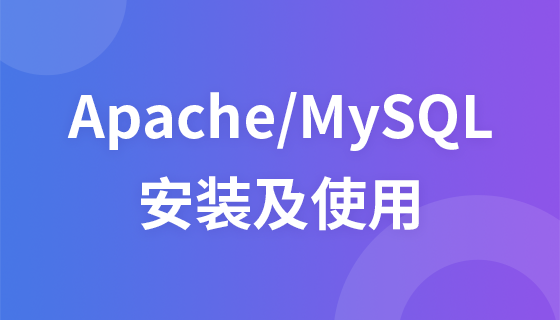
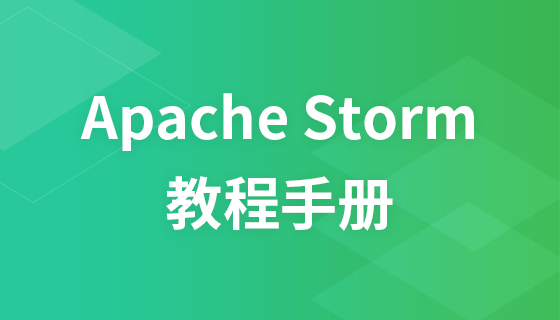

Copyright 2014-2025 https://www.php.cn/ All Rights Reserved | php.cn | 湘ICP备2023035733号